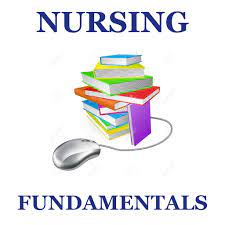General Patient Information
Name: Mrs. Joy Smith
Age: 38 y/o
Gender: Female
Ethnic group: African American
Chief complaint
“I feel increasing pain around the left thigh and buttock. I feel fatigued and have noticed some swelling in the affected part.”
History of Present Illness
Joy reports that the pain and swelling in her left hip and buttocks that begun a week ago. The 38 y/o African American has been experiencing pain and swelling in multiple joints for the past three months. She has experienced active bilateral synovitis in her wrists and ankles. She has also observed small nodules on her left elbows. The hip joint swelling began five days ago.
She has been treating the pain using acetaminophen. Since then, she has been experiencing increasingly severe pain and edema in the affected region. The pain is relieved by rest but aggravated by mobility and physical activity. She reports the pain at scale 8 in 0-10 pain scale. She denied any history of trauma. She occasionally experiences morning stiffness that lasts for 30 minutes and low back pain that usually worsen at night. She has not experienced had any flares.
She is asthmatic and suffers from seasonal allergies. She is also allergic to aspirin as it causes gastrointestinal discomfort. The medication she has used recently is acetaminophen 500mg for pain management and Proventil HFA to manage an asthma attack. She has no chronic illness and has not undergone any surgeries. The only time she has been hospitalized is during delivery of her two daughters.
She does not smoke but occasionally takes a glass or two of wine. She has no appetite changes. She has been experiencing urinary tract infections occasionally but has no history of sexually transmitted illness. She denies no psychological disorders.
She began her menarche at age 13 years. Her LMP was last month, which she describes as a regular flow that lasted for three days. She is Gravida 2POO2. She carried all her pregnancy with no complication and breastfed all her children. She has sex 2 to 3 times a week but with no protection. She has been using IUD method of contraception which she removed six months ago.
She does not engage in any health maintenance screenings such as mammogram or Pap test. Her father is 72 years old and hypertensive. Her mother is 68 years old and is diagnosed with diabetes. She is happily married and lives with her husband and two daughters. She lives with her husband and her two daughters (age 12 and eight years old). She is a housewife whereas her husband works as sales manager at a local supermarket.
She has a good rapport with her neighbors and is actively involved in local community programs especially those that promote healthy living. Her family is financially and socially stable. She is physically active and tries to eat homemade food as much as possible.
Review of systems
The patient is alert and oriented. She denies fever or chills. She has no skin rashes, lesions or any discolorations. She uses corrective lenses and denies any changes in her vision and has the normal hearing ability. She denies dental complications, throat pains, dysphagia or nose bleeds. She denies skin discolorations, breast lumps, and breast masses. She denies SOB, chest pains, palpitations, or edema. This indicates that her respiratory system is in great shape. She denies wheezing, dysponea or hemoptysis. She has no history of pneumonia or TB.
She feeds on homemade foods. She denies any changes in appetite. She denies NVD. She has not seen any changes in bowel movement and elimination frequency. She denies heartburn, constipation or presence of hemorrhoids. She denies changes in urine quality and quantity. She denies hematuria. She complains of frequent muscle pain and complaints of a backache.
She has no history of fracture or trauma. She reports that she is unable to lift her arms without extreme pain in the shoulder. In the last five days, it has been difficult to stand for long periods of time due to ankle and foot pain. Although acetaminophen 500 mg three times a day has helped her manage the pain and stiffness, it is no longer effective.
She denies syncope of transient paralysis and seizures. She denies bleeding and has never been diagnosed with anemia. She denies presence swollen glands or excessive thirst. She looks slightly distressed but denies the history of psychosocial disorders or depression.
Objective data
The patient is in acute distress. However, she is well groomed, alert and oriented. Her vital signs are as follows; Weight 220 lb, Height 5’3”, BMI 39, BP 130/70 (taken on the right arm when seated), HR 80, RR 18 unlabored, T 97.5, SATs 99% at room temperature. The patient skin is moist and warm. No discoloration observed. The skin color is normal, intact and with no rashes, lesions or bruises.
The head is normocephalic and atraumatic. EOMs and PERRLA are intact with no lesions. The ears have positive reflex, bilateral TMS with no discharge or infection. Umbo and short process are visible with no foreign body. Nose canals are bilateral with no rhinitis in both of the nares. The nasals turbinate’s are not swollen.
The oral-pharyngeal mucosa is moist and non-erythmatous pharynx. No nodules or dental prosthesis observed. S1 and S2 are regular with normal rate. No murmurs or peripheral edema noted. The respirations are normal and unlabored. Wheezing sounds are absent in all of the four quadrants. She has normal bowel in all four quadrants. The abdomen is soft and non- tender. No palpable masses noted.
The chest and breast region is unremarkable with no lymphadenopathy. The bladder is non-distended. No changes in urine quality or quantity. No hematuria. The gait is not normal. She is limping as she walks across the exam room which indicates discomfort or pain in the affected limb. The left hip is swollen and painful. The pelvic exams indicated no inguinal adenopathy, lesions or erythma on the genitalia. Vaginal discharge is normal.
The cervix is normal without palpable masses. The lower quadrants are tender. The adnexal and uterine are tender. No pain is indicated with cervical motion. The anterior and midline of the uterus is smooth and not enlarged. She has clear speech, good tone and intact cranial nerves II. She appropriately maintains eye contact.
Differential diagnosis
Based on the signs and symptoms, the patient is likely to be suffering from infections arthritis, psoriatic arthritis, gout or osteoarthritis. This is because these diseases are collectively grouped as arthritis as they commonly affect the small joints, hips, hands, lumber and cervical spine. Differentiating these diseases is challenging as they all present with joint stiffness and pain that worsen with activity (Buttaro, et al., 2013).
Psoriatic arthritis is suspected because of clinical manifestations such as generalized fatigue, swollen and painful joints, and limited range of motion. The disease will be confirmed by laboratory tests. Similar to Psoriatic arthritis, Rheumatoid arthritis and infection arthritis is suspected because of the presence of signs and symptoms such as joint stiffness, pain, fatigue, tenderness and limited range of motions.
Gout is suspected because of patient’s complaints about intense throbbing joint pains, discomfort and inflammation. However, gouts normally affect the large joints of the big toe. The disease will be confirmed by the laboratory findings. Similar to out, the patient may experience joint pain that hurt during and after movement. Joint stiffness is noticeable especially in the morning or after long periods of physical inactivity (Buttaro et al., 2013).
To reach a definitive diagnosis, it is important to undertake differentiating diagnostic investigations. For instance, diagnosis of psoriatic arthritis is supported by skin biopsy of the affected lesions. Infectious arthritis is self-resolving within six weeks whereas gout is confirmed by serum uric acid that is above 416 micromols/L. Rheumatoid arthritis, on the other hand, is confirmed by whereas osteoarthritis is distinguished from others by the rheumatoid factor, C-reactive protein, and erythrocyte sedimentation whereas osteoarthritis by radiographs that indicate loss of joints space, osteophytes and subchondral sclerosis (Kordasiabi et al., 2016).
Lab tests
Diagnosis should be conducted as early as possible to optimize patient’s outcomes. The patient presents with painful and swollen hip joint. In this case, appropriate laboratory tests include; CBC, Renal function, erythrocyte sedimentation (ESR), C- reactive protein (CRP), Level of RhF and citrullinated peptide antibody (CCP). Imaging tests such as radiography and X-rays will also be ordered to make the definitive diagnosis. Also, these tests are used to evaluate the particular erosive changes to assess the disease progression (Buttaro et al., 2013).
According to my preceptor, some lab tests such as complete blood count and renal function are necessary as they influence treatment options. For instance, if the patient is diagnosed with renal insufficient or thrombocytopenia, the healthcare provider must avoid prescribing a non-steroidal anti-inflammatory drug (NSAID). Some medications are also contraindicated with some hepatic disease.
Definitive diagnosis: Rheumatoid arthritis
The onset of the disease peaks between the ages of 30 and 50 years. It is the most common cause of disability in the USA. It is reported that 35% of people diagnosed with RA reports disability within ten years (Centers for Disease Control and Prevention, 2013). RA typically presents with pain and stiffness in multiple joints in the body. As the disease progress, other small joints including the interphalangeal joints and metacarpophalangeal become affected.
In most patients, they may experience morning stiffness that may last more than 30 minutes. In some cases, Boggy swelling may become visible caused by synovitis and subtle synovial thickening. Systemic symptoms include low-grade fever, fatigue and weight loss (Buttaro et al., 2013).
According to the American College of Rheumatology and European League against Rheumatism 2010, RA diagnostic criteria are as indicated below (Aletaha et al., 2010):
(Source: Aletaha et al., 2010)
The laboratory findings were as follows; CRP 5.7 mg/ dL(normal 0.1-0.9 mg/ dL); ERS 26 mm/h (normal 0-15mm/h) RhF 33.4 (normal 0-29 IU/mL) and CCP 40 (normal0-20). Radiography results were still pending. The other parameters were within the normal limits. Rheumatoid arthritis (RA) is the most common type of arthritis. Based on this guideline, the patient complaint is 1-3 small joints with the involvement of a large joint (score 2); the serology tests indicates low positive RhF and High positive ACPA (score 3) and abnormal CRP and ESR levels (score 1).
The total score is 6 out of 10 which is the score needed for classification of the patient as having RA. RA is a progressive disease, and it is difficult to know when the disease first developed. Most patients experience periods of alternating bothersome symptoms. Onset, severity and disease symptoms vary greatly from one person to another. Therefore, treatment should b tailored to meet individual medical needs (Buttaro et al., 2013).
Treatment and management of the disease
Once diagnosed, the initial treatment and evaluation should begin immediately. Due to different disease presentations, a patient specific and effective care plan was developed. The goal of this treatment was to minimize joint pain and swelling, slow disease progression, prevention of deformity and maintenance of quality of life. With the help of my preceptor, the pharmacological treatment was initiated using oral Methotrexate (MTX) 7.5mg per week (divided in 2.5 mg orally after 12 hours in 3 doses) plus 5 mg Prednisone per day. She was also given Diclofenac 50mg three times a day. She was advised to continue using acetaminophen when required.
Secondly, I noted that the patient was obese (BMI 39). Therefore, the patient was advised to feed on healthy diets and to perform regular exercises. The diets recommended for this patient include eating plenty of fruits, whole grain cereals, and vegetables. The patient was also advised to feed on foods rich in omega -3 such as fish oils, and to feed a low-fat diet. She was also advised to limit alcohol intake and to consume moderate sugars and foods that have added sugars (Dains, Baumann, & Scheibel, 2012).
Whereas there is limited evidence-based practice on the impact of diet on RA, my preceptor advised that patient education on dietary modifications is acceptable. Therefore, it is always important to encourage parents to adopt and maintain healthy diet and weight. This intervention is particularly important for this patient because she has high body mass index (BMI).
Moreover, weight reduction helps reduce the weight bearing of joints and prevention of other disease comorbidities such as high blood pressure. It has also been indicated that people with unhealthy weight have poorer functional status; further emphasizing the need for healthy weight control in general disease management (Kordasiabi et al., 2016).
Another important factor in weight control is physical activeness. The patient was referred to a physiotherapist for services relating to exercises s it has been statistically shown significant improvements in patients diagnosed with RA body functions and social component. This is because exercises are well accepted to have a big role in combating the adverse effects associated with RA on muscle endurance, strength and aerobic capacity (Rudan et al., 2015).
However, fatigue is also common in patients diagnosed with RA. The patient was advised to rest their inflamed joints. The patient was also advised on other strategies such as the application of heat and cold therapy to relieve pain. The patient was also advised on passive and active exercises to maintain range of motion in the affected joints (Dains, Baumann, & Scheibel, 2012).
Complementary therapies have been associated with some favorable outcomes. These include the use of acupuncture, use of gamma-linolenic acid from black currant seed oil, evening primrose and thunder god vine. However, the patient was informed about the potential adverse effects associated with the herbal therapy (Kordasiabi et al., 2016).
The patient was also given folate or folic acid (400 mg). This is important because some RA medications such as methotrexate interfere with absorption of folic acid. Research also indicates that patients under corticosteroids make it difficult to absorb calcium; therefore, the patient was given calcium supplements (Buttaro et al., 2013).
Patient education
The main goal of health promotion is to empower patients with practices that empower them and makes them improve their well-being holistically ranging from mental and spiritual mental wellbeing. The patient was educated on the importance of participating in preventive care such as Pap test and mammogram screening. She was advised to perform Pap test and mammogram screening at least twice a year to facilitate early detection of the disease and effective management of the disease (CDC, 2013).
The patient stated that she had removed IUD six months ago as it was making her bleed uncontrollably and developed frequent urinary tract infections. When asked if she is ready to have another child, she was hesitant saying that they had planned to have only two children. I advised her on the alternative contraceptive methods such as hormonal birth control methods that have been found to be effective.
These contraception methods cause the cervical mucus to thicken making it difficult for the sperm and pathogens to reach the uterus. The patient was also taught about hygiene practices such as wiping herself front to back after visiting the toilet to avoid introducing colon pathogens into her vagina (Buttaro et al., 2013).
Follow up care
Remission occurs in 10 to 50% of RA patients. It is more likely in males, people below 40 years, nonsmokers and the late onset of the disease. If the disease is well controlled, the medication dosages will be cautiously reduced to the minimum amount necessary (Healthy People 2020, 2013). Long-term monitoring of the disease is important because although RA is considered a disease of joints, it is also the disease that involves multiple organ systems.
For instance, patients diagnosed with RA are likely to have increased risk of lymphoma which is believed to be caused by underling inflammation and not a consequence of the disease. Patients diagnosed with RA have increased risk factors such as high blood pressure, high cholesterol. Also, caution is needed with the continued use of DMARDs as it is associated with malignancy. Lastly, the disease is associated with depression which affects more than 40% of people diagnosed with RA; which is associated with long-term use of corticosteroids (Kordasiabi et al., 2016).
Therefore, ongoing monitoring of the patient will be done after every two weeks. This is important in assessing the patient progress and the overall management goals such as treatment efficacy, disease activity, other comorbidities and patient’s quality of life in general. It is also important to run the laboratory tests to monitor toxicity and adverse effects of the modification. The referral was made to a rheumatologist for further evaluation.
References
Aletaha, D., Neogi, T., Silman, A. J., Funovits, J., Felson, D. T., Bingham, C. O., … & Combe, B. (2010). 2010 rheumatoid arthritis classification criteria: an American College of Rheumatology/European League Against Rheumatism collaborative initiative. Arthritis & Rheumatism, 62(9), 2569-2581.
Buttaro, T. M., Trybulski, J., Polgar-Bailey, P., & Sandberg-Cook, J. (2013). Primary Care: A collaborative practice. Elsevier Health Sciences.
Dains, J, E., Baumann, L.C., & Scheibel, P. (2012). Advanced health assessment and clinical diagnosis in primary care (4ed.) St. Louis, Mo.: Elsevier Mosby.
Centers for Disease Control and Prevention (CDC. (2013). State prevalence of self-reported doctor-diagnosed arthritis and arthritis-attributable activity limitation. Retrieved from https://www.cdc.gov/arthritis/data_statistics/national-statistics.html
Healthy People.gov. (2013). Arthritis, osteoporosis and chronic back conditions. Retrieved from https://www.healthypeople.gov/2020/topics-objectives/topic/Arthritis-Osteoporosis-and-Chronic-Back-Conditions/objectives
Kordasiabi, M. C., Akhlaghi, M., Baghianimoghadam, M. H., Morowatisharifabad, M. A., Askarishahi, M., Enjezab, B., & Pajouhi, Z. (2016). Self-Management Behaviors in Rheumatoid Arthritis Patients and Associated Factors in Tehran 2013. Global Journal of Health Science, 8(3), 156–167. http://doi.org/10.5539/gjhs.v8n3p156
Rudan, I., Sidhu, S., Papana, A., Meng, S., Xin–Wei, Y., Wang, W., … Global Health Epidemiology Reference Group (GHERG). (2015). Prevalence of rheumatoid arthritis in low– and middle–income countries: A systematic review and analysis. Journal of Global Health, 5(1), 010409. http://doi.org/10.7189/jogh.05.010409
Want help to write your Essay or Assignments? Click here









